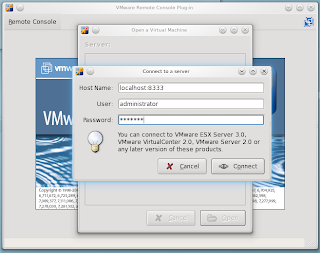Restoring files manually from a mondo backup
As already mentioned in earlier posts, I uses mondo to create system backups of all my systems. By system backups I mean; create a backup of the live system, without any personal data. In short, this is a backup of everything except home folders. The home folders are backed up using rsync and external disks, but this is another story. Restoring from a mondo backup is easy; simply burn the images, put it in a cd drive and nuke the system (yes, this is a restore option in mondo :) ). If you just want to restore some files from the backup, without overwriting the whole system, there's an easy way to do this. Suppose you created an ISO a while ago and these are stored on some disk. First, you will need to mount the ISO as a loopback device like so: mount -o loop MyIso.iso /mnt The ISO is now mounted in /mnt . Now locate the file you want to restore (I was going to restore smb.conf ): $ grep smb.conf /mnt/archives/filelist.* /mnt/archives/filelist.11:/var/lib/ucf/cache/:etc:samba:

